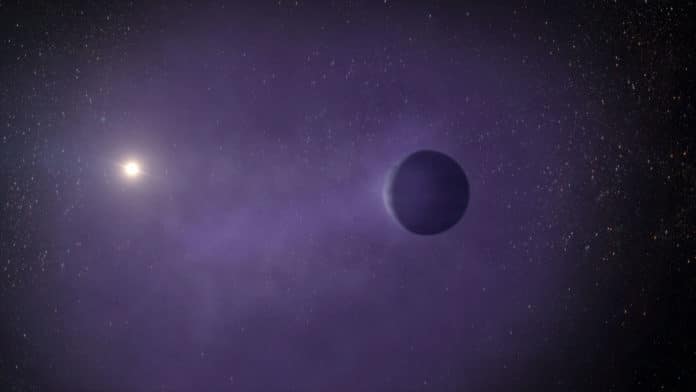Exoplanets come in various sizes, from gas giants larger than Jupiter to small, rocky planets about as big around as Earth or Mars. Recently, astronomers using NASA’s Hubble Space Telescope identified two different “mini-Neptune” planets cases.
These two mini-Neptune planets- TOI 560.01 (also known as HD 73583b) and HD 63433c-are found to their puffy atmospheres and likely transforming into super-Earths. Both planets are located in the star system called TOI 560, located 103 light-years away.
They used the W. M. Keck Observatory in Hawaii to study one of two mini-Neptune planets in the star system. They found that the planets are losing their atmosphere due to radiation from the stars. The radiation from their star drives a hot gas to escape like steam from a pot of boiling water. This suggests that they could be turning into super-Earths.
Michael Zhang, a lead author of both studies and a graduate student at Caltech, said, “Most astronomers suspected that young, mini-Neptunes must have evaporating atmospheres. But nobody had ever caught one in the process of doing so until now.”
Professor of planetary science Heather Knutson of Caltech, Zhang’s advisor and a co-author of the study, said, “This was unexpected, as most models predict that the gas should flow away from the star. We still have a lot to learn about how these outflows work in practice.”
Astronomers could detect the escaping atmospheres by observing the mini-Neptunes cross in front of, or transit, their host stars. The planets cannot be seen directly, but when they pass in front of their stars, as seen from our point of view on Earth, telescopes can look for absorption of starlight by atoms in the planets’ atmospheres.
In the case of mini-Neptune TOI 560.01, scientists found signatures of helium. For the star system HD 63433, they found signatures of hydrogen in the outermost planet they studied called HD 63433c, but not the inner planet, HD 63433b.
Zhang said, “The inner planet may have already lost its atmosphere.”
“The speed of the gases provides the evidence that the atmospheres are escaping. The observed helium around TOI 560.01 is moving as fast as 20 kilometers per second, while the hydrogen around HD 63433c is moving as fast as 50 kilometers per second. The gravity of these mini-Neptunes is not strong enough to hold on to such fast-moving gas. The extent of the outflows around the planets also indicates escaping atmospheres; the cocoon of gas around TOI 560.01 is at least 3.5 times as large as the radius of the planet, and the cocoon around HD 63433c is at least 12 times the radius of the planet.”
CREDITS:
VIDEO: Adam Makarenko (Keck Observatory)
Knutson said, “As exoplanet scientists, we’ve learned to expect the unexpected. These exotic worlds are constantly surprising us with new physics that goes beyond what we observe in our solar system.”
“This latest discovery of two mini-Neptunes with escaping atmospheres represents the first direct evidence to support the theory that mini-Neptunes are indeed turning into super-Earths.”
Journal References:
- Michael Zhang et al. Escaping Helium from TOI 560.01, a Young Mini-Neptune. DOI: 10.3847/1538-3881/ac3fa7
- Michael Zhang et al. Detection of Ongoing Mass Loss from HD 63433c, a Young Mini-Neptune. DOI: 10.3847/1538-3881/ac3f3b
